How to Ski Smarter, Avoid Injuries, and Feel More Confident
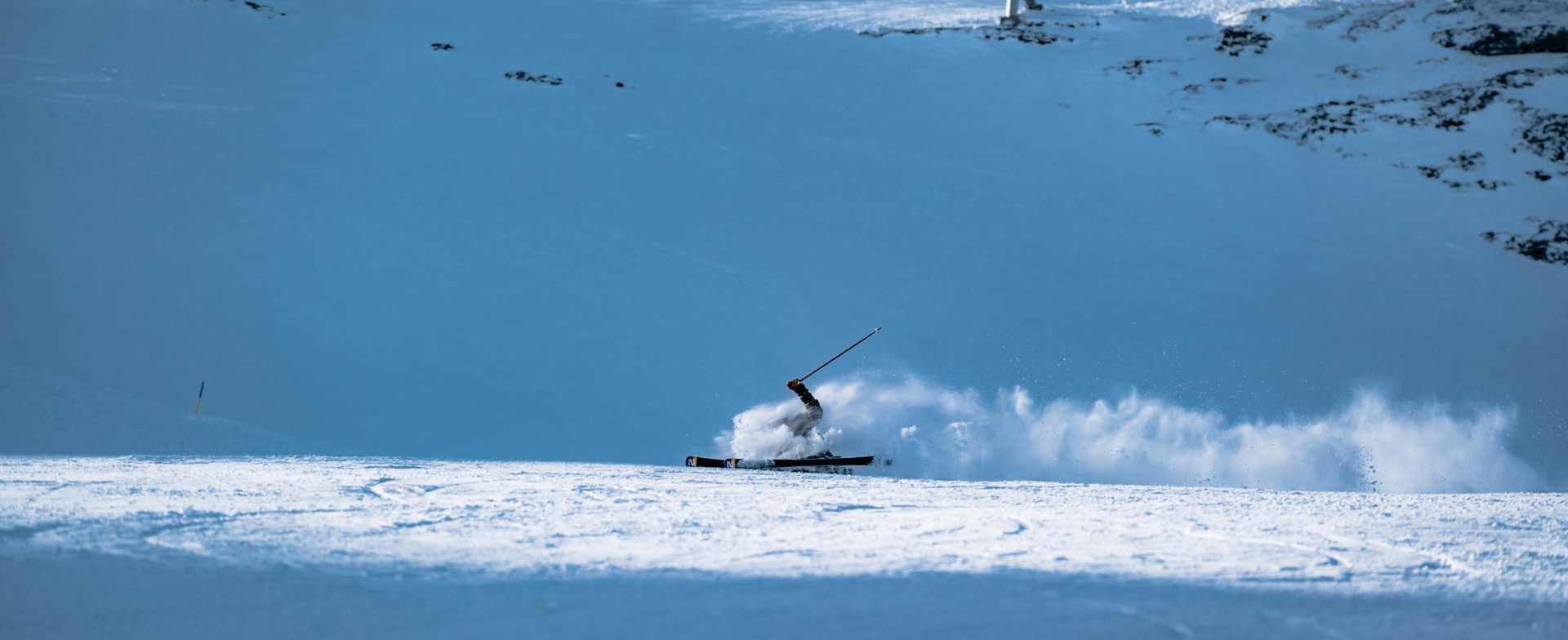
Votes:
It’s not about skiing cautiously or avoiding certain runs — it’s about skiing smarter and having fun.
Introduction
Why do we get scared when we ski? It’s simple — skiing can be risky. And that risk of injury often means we lose confidence and miss out on skiing the way we want to ski.
But the good news is that much of that risk is within our control.
Every skier, from beginners tackling their first blue run to advanced skiers on steep terrain, has faced moments of uncertainty. Fear can hold you back from skiing confidently and enjoying the slopes. And while it’s natural to think caution is the solution, over-cautious skiing often leads to hesitation — taking away the fun and flow that make skiing so exhilarating.
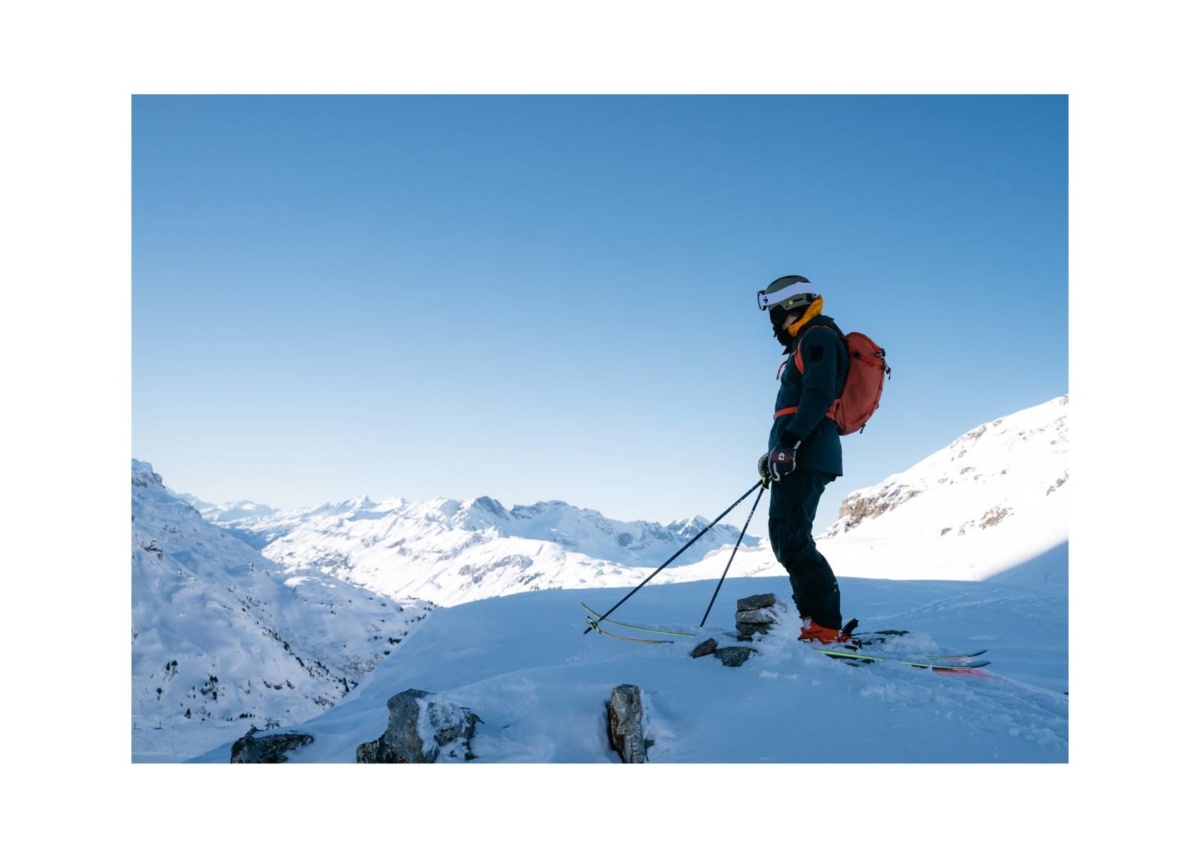
The real key to safer, more confident skiing? Technique. By understanding the technique behind your speed, balance, and how you interact with the forces of the mountain, you can ski smarter, reduce your risk of injury, and enjoy every run.
Whether you’re moving from green to blue runs or exploring steeper terrain, these techniques are designed to work for skiers of all levels. Small adjustments in your approach can lead to big improvements in control and confidence.
In this blog, I’ll share three powerful techniques — refining your turn shape, improving your edging, and mastering balance.
Quick Links
Speed control: turn shape
Speed control: edging technique
Position: balance
Managing fatigue and adapting to the conditions
About Me
Hi, I’m Filippo. I’ve been a ski instructor for 14 years and run the Breuil Ski School in Cervinia, Italy. I’ve been skiing since I was 3, and it’s not just a passion—it’s my way of life. In the summers, I coach surfing, but skiing is my true calling. For me, it’s about skiing in a way that allows me to enjoy it for as long as possible.
After three knee surgeries in my youth, I had to adapt my technique to keep skiing at a high level. It wasn’t easy, but I learned that skiing isn’t just about fitness or strength—it’s about understanding your body, working with the mountain, and mastering control. Now, I teach skiers of all levels how to find their flow, ski confidently, and most importantly, have fun while staying safe.

Key Techniques for Safer Skiing
Skiing confidently and safely comes down to managing the forces at play. Gravity pulls you downhill, rebound pressure flows through your knees and spine, and G-force builds as you accelerate in turns. When these forces aren’t managed correctly, they can lead to loss of control, unnecessary strain, or even injury.
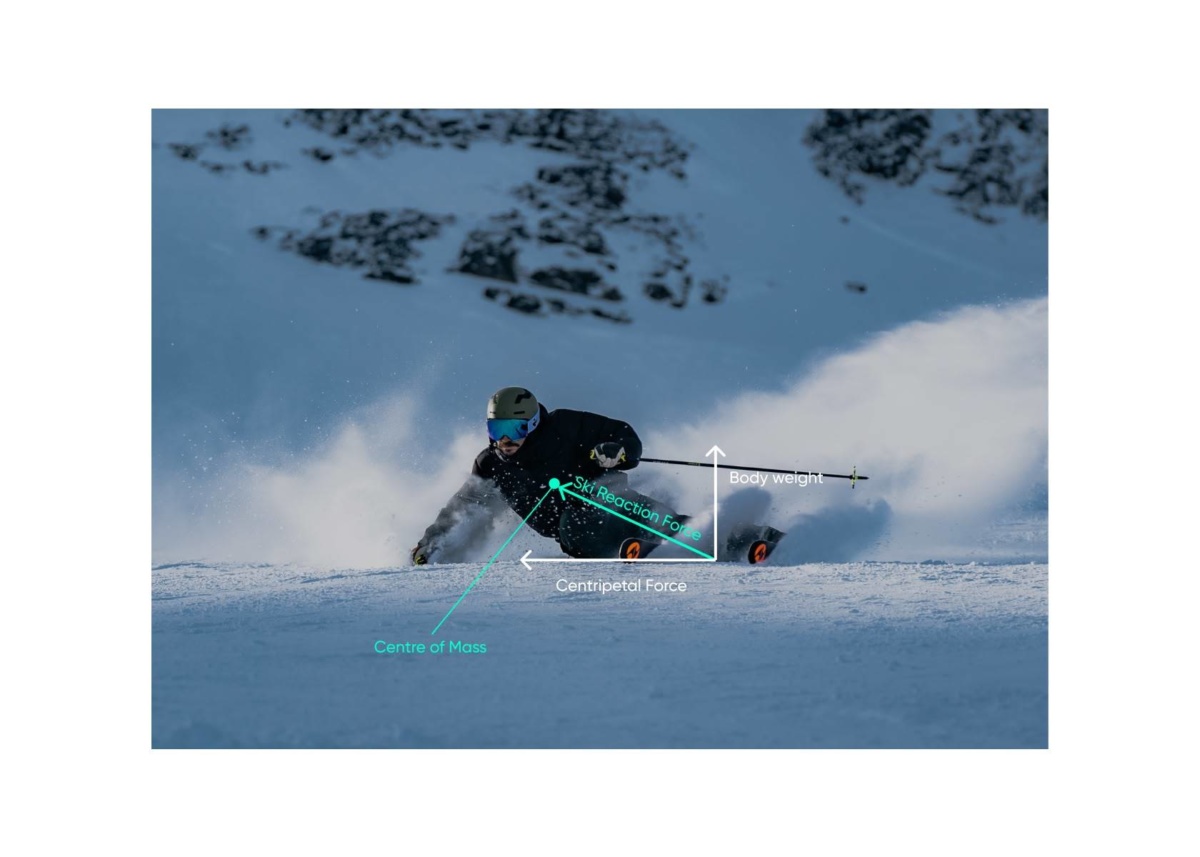
There are many forces acting on your body as you ski.
For example, poor balance means your knees take on more pressure, increasing strain on your joints. This not only makes it harder to control your speed — impacting your confidence and safety.
Skiing is constant balancing act with forces pulling you in different directions. If you don’t manage them correctly, it can feel like the mountain is in charge — not you.
Let’s break down these three fundamental techniques and how they work together to improve your confidence and control.
1. Control your speed with Turn Shape
Speed can feel intimidating when you’re unsure how to manage it. Often, as you accelerate, your confidence and control seem to vanish. This is because the forces acting on your body increase, and without solid technique, it becomes harder to stay in control.
The faster you go, the greater your momentum pulls you outward during turns. If your balance or edging isn’t correct, this can quickly overwhelm you, leading to loss of control. Imagine turning on a bike at high speed. Without leaning the right way, you’d feel like you’re being thrown outward — skiing works the same way.
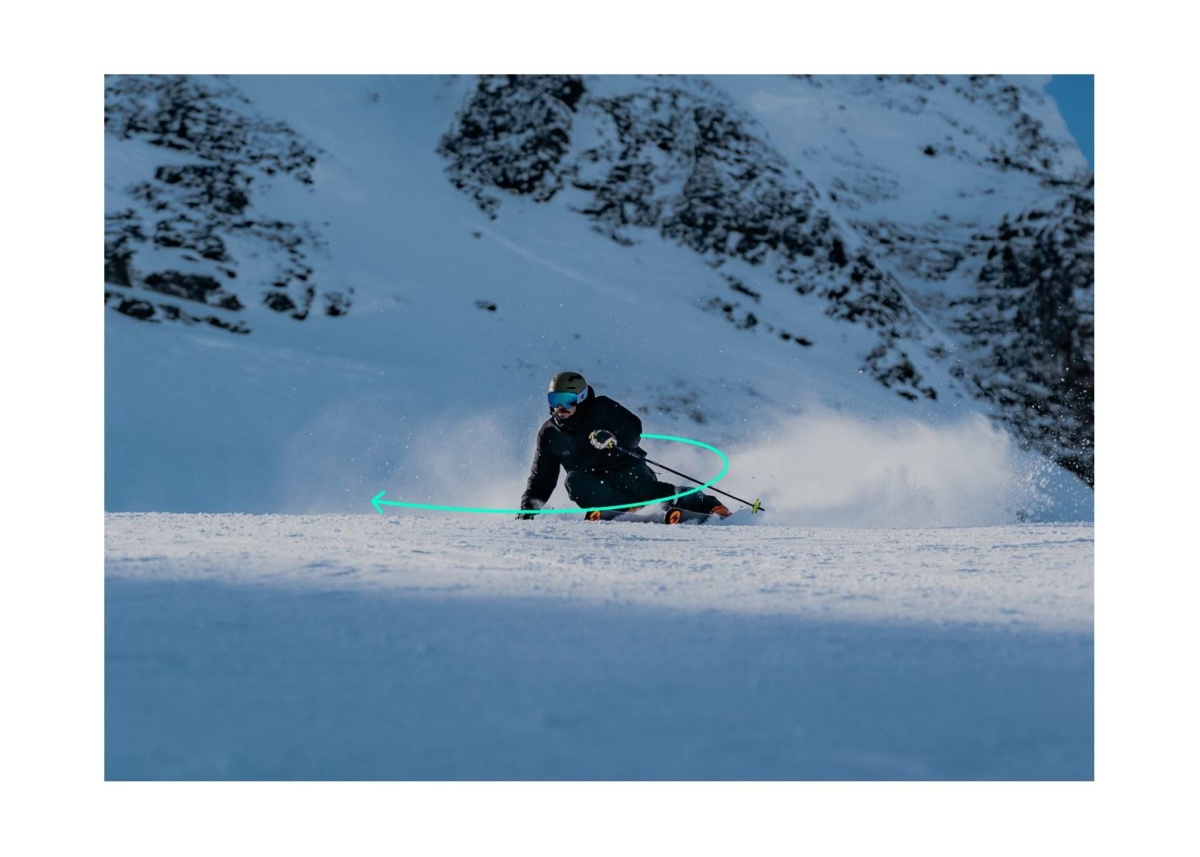
If you’re a Carv user, you can actually measure this force with the G-force metric, so you can look back at your runs and relate this feeling.
For instance, I once had a student who started a run with too much speed and found herself leaning back to compensate. Her skis lost grip, and she ended up sliding out—thankfully without injury. This kind of mistake happens because our instincts often lead us to fight against speed rather than work with it through proper technique.
When transitioning from parallel skiing, it can be tough to break away from Z-shaped turns, where you break and skid at the end of each turn. While this might feel safe, it actually makes controlling your speed more difficult. The key is moving toward closed, rounded S-shaped turns, which let you manage momentum smoothly without relying on braking or sharp stops.
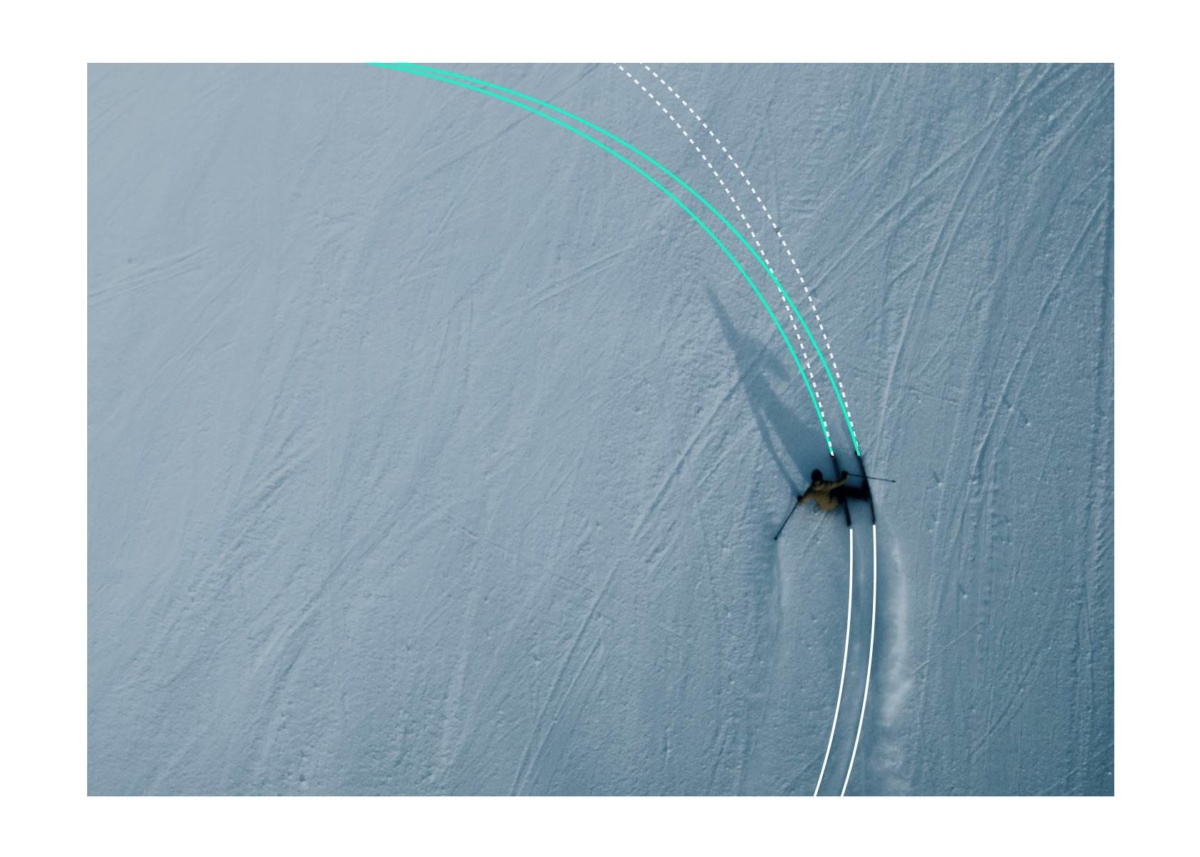
When I’m teaching students, I often draw a square in the snow and tell them, “Keep your turns inside the square.” Why? Because opening up the second half of your turn — breaking out of that imaginary square — means you lose control and pick up speed.
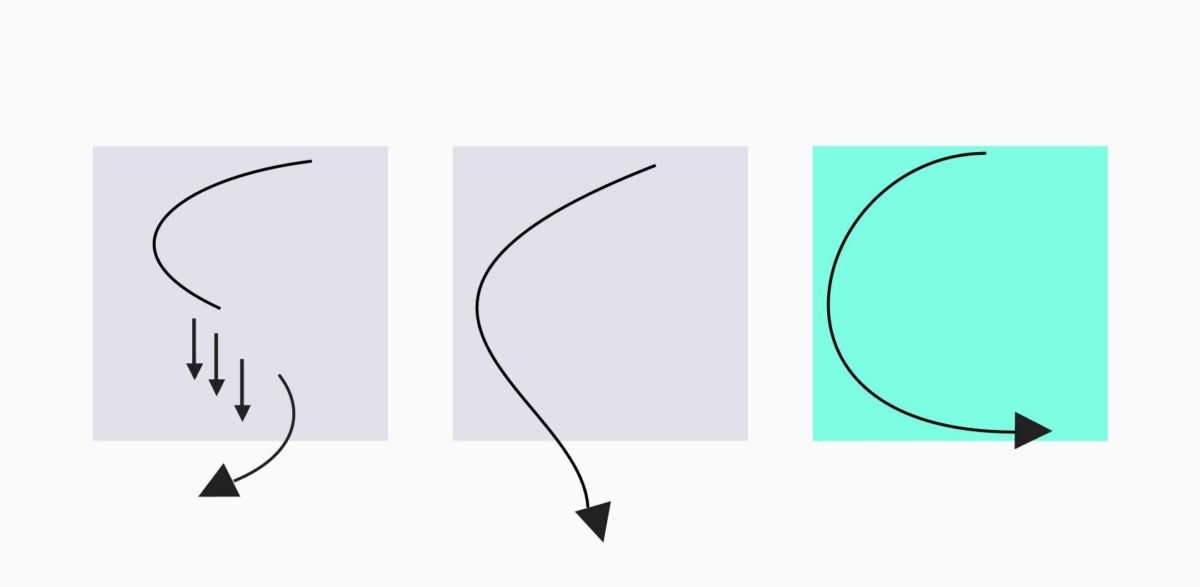
Here's a version of what I demonstrate with students on the snow.
Why Turn Shape Matters:
Force Management: Rounded turns create a more gradual change in acceleration, which reduces the forces you experience making them easier to manage, helping to keep you stable and balanced.
Avoiding Injury: Reduces the strain caused by abrupt braking or uneven movements.
Confidence Boost: Smooth turns make steeper terrain feel manageable, helping you ski without hesitation.
Drills to Develop Turn Shape:
J-Turns
Goal: Build directional control and develop forward and backward weight adjustment during turns.
- What to Do:
Start with your skis pointing across the slope.
Steer downhill briefly, then guide your skis back uphill to a controlled stop.
- Why It Helps:
Teaches you how to adjust your weight forward and backward during a turn.
Helps build confidence in steering and managing speed.
- What to Focus On:
Subtle weight shifts to the balls of your feet as you steer downhill.
The response of your skis as you guide them back uphill.
C-Turns
Goal: Develop complete control over speed and momentum by mastering turn shape and balance.
- What to Do:
Create "C" shapes in the snow by steering your skis fully across the slope at the end of each turn.
Focus on finishing each turn with control.
- Why It Helps:
Encourages proper edging and balance throughout the turn.
Ensures speed control by completing each turn across the slope.
- What to Focus On:
A steady grip from the start to the end of each turn.
Smooth carving of your skis—avoid skidding or sliding.
S-Turns
Goal: Build rhythm and continuous speed control for steeper or variable terrain.
- What to Do:
Link multiple "C" turns together to form flowing "S" turns down the slope.
Focus on maintaining rhythm and consistency between turns.
- Why It Helps:
Builds fluidity and rhythm for dynamic terrain.
Strengthens your ability to control speed and maintain stability.
- What to Focus On:
A seamless flow from one turn to the next.
Consistent edge grip and a stable, centered stance over your skis.
If you’re a Carv user, you can visualise these turns using the Turn Shape Graphs, so you can track your progress as you work through these drills. Carv is able to draw your exact turn shape, allowing you to see if you’re making smooth rounded turns, or Z-Shaped turns.
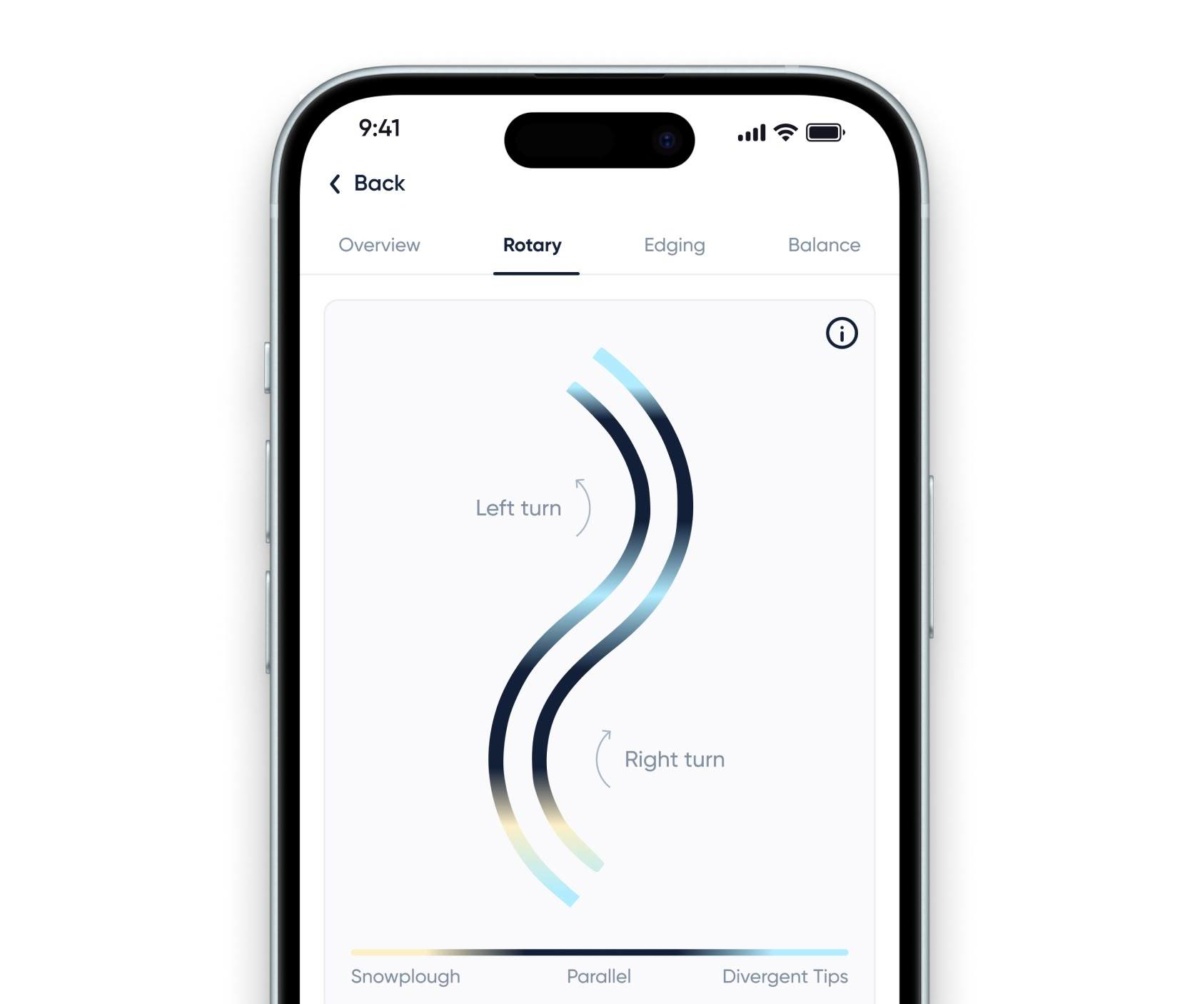
2. Manage you speed with Edging control
Edging is just as important as turn shape for managing speed and gaining confidence. By learning to engage your edges progressively and smoothly, you can handle the forces acting on your skis without relying on excessive effort or risky braking.
As you move into the fall line, gravity takes over, and the top half of the turn should feel light and effortless—this is your chance to set up the turn. As you steer out of the fall line, pressure builds, and your edges become critical for controlling direction and speed.
Avoid “park-and-ride” turns, where you lean back and rely heavily on your edges. This habit strains your knees and limits your ability to steer effectively. Instead, use your whole body to tip your skis dynamically, letting your edges guide your momentum safely and smoothly. Think of it as gripping the mountain rather than fighting it.
Carv Tip for advanced skiers: Carv’s Mid-Turn Edge Build metric tracks how well you hold your edge angle throughout a turn. By focusing on improving this score, you’ll develop tighter, more controlled turns, allowing you to tackle steeper terrain confidently while reducing strain on your body. Here’s what it looks like when done well.
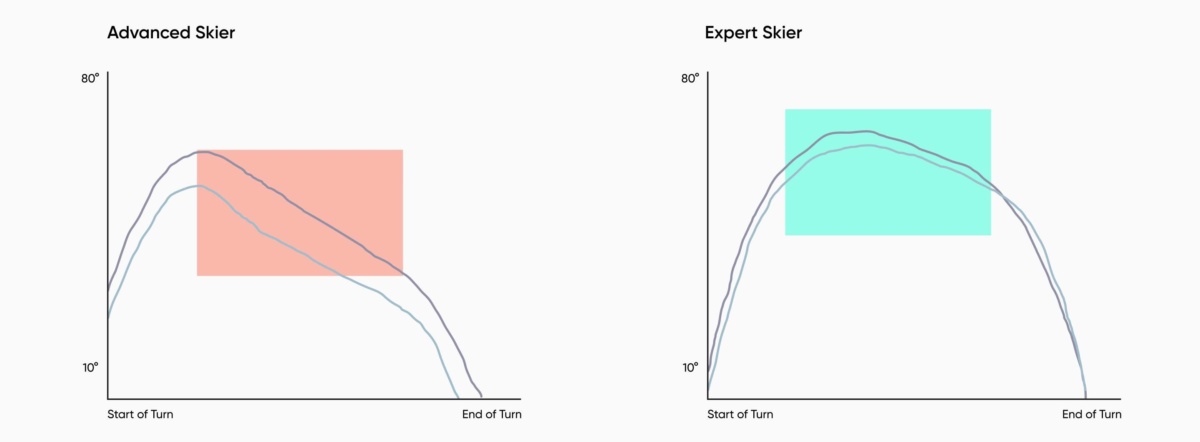
Why Edging Matters:
Force Management: Proper edging ensures centripetal force push you smoothly into a turn without overloading your legs or knees.
Avoiding Injury: Prevents drifting and sliding, which can lead to falls or overcompensation.
Confidence Boost: Reliable edge grip gives you control on steeper slopes or in icy conditions.
Extra detail for the nerds
When you edge your skis correctly, you stay locked into a nice rounded arc, preventing sliding or drifting. Proper edging requires progressive build up of angulation and pressure to ensure you are braced against the forces created in the turn.
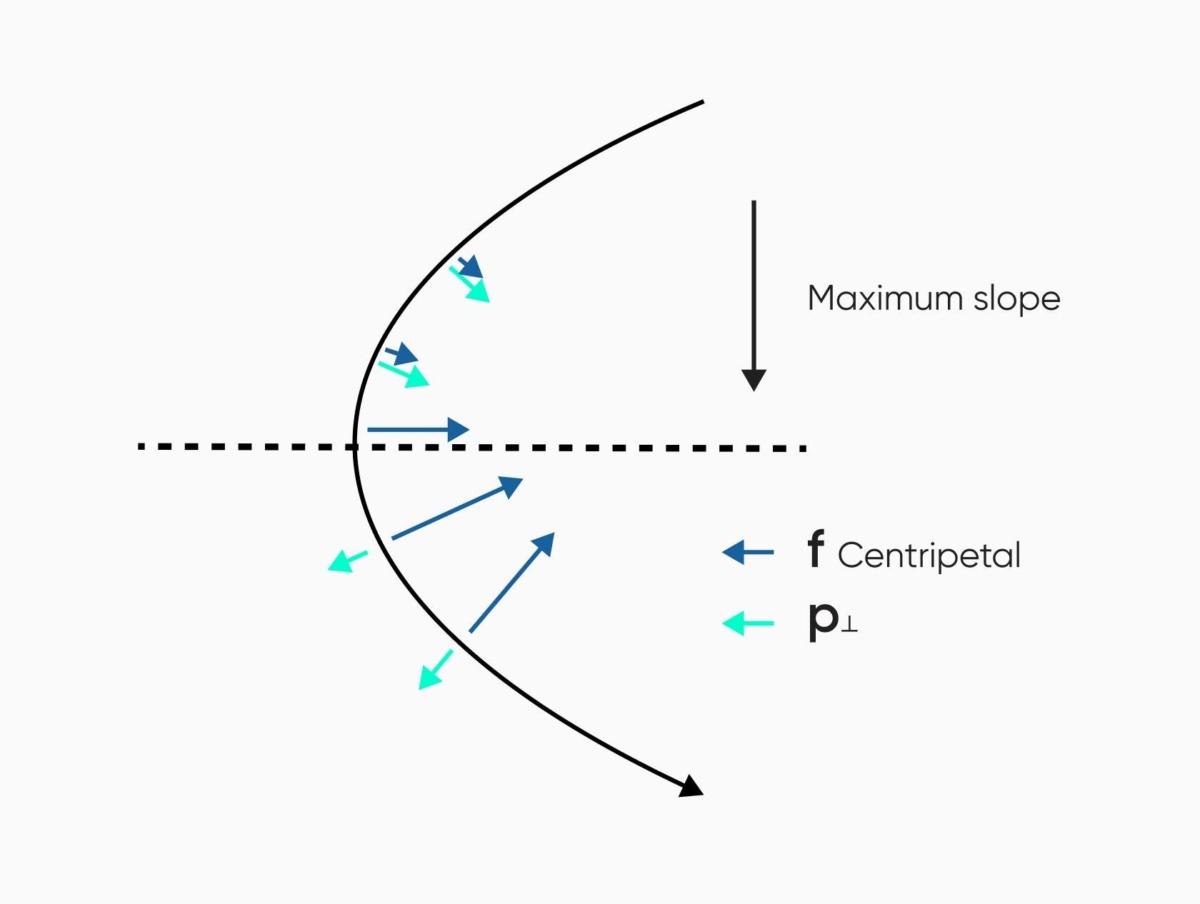
Drills to Develop Edging:
Edge-to-Edge Drill
Goal: Build awareness of edge engagement and master smooth transitions between turns.
- What to Do:
Find a medium or easy slope to practice.
Remove your poles to eliminate distractions and focus entirely on edging movements.
Shift your weight laterally from one ski edge to the other as you turn, avoiding any rotational movement of the feet or upper body.
Place your hands on your knees to feel the lateral movement as you ski.
- Why It Helps:
Teaches how to engage your edges progressively for tighter, more controlled turns.
Builds consistency in edge pressure, creating a stable and reliable foundation for carving.
Helps refine lateral movement without skidding or relying on rotational inputs.
- What to Focus On:
Gradual pressure buildup on your edges as you tip your skis.
Smooth, deliberate lateral shifts—avoid drifting or abrupt movements.
Feel how your weight transitions cleanly from the inside edge of one ski to the inside edge of the other.
3. Stay in control with Balance
Balance is the foundation of all skiing technique. Without it, even well-shaped turns and good edging can fall apart. Nervous skiers often lean back as a reaction to the slope, but this throws off your control, increases knee strain, and makes challenging terrain harder to navigate.
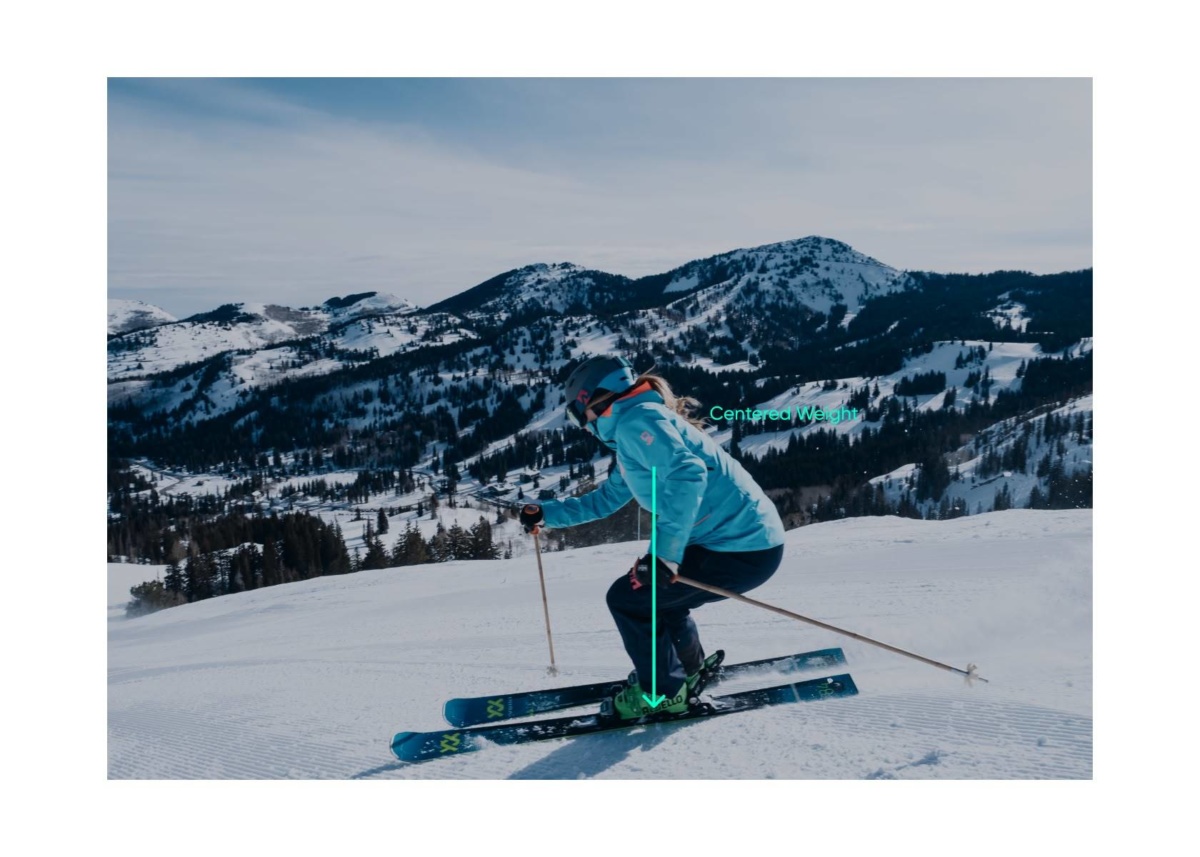
True balance comes from keeping your weight centered within the natural "square" of your boots—the foundation of stability. Staying within this square ensures control and effective force management, while stepping outside it disrupts balance and stability.
Focus on keeping your hips active and aligned with your skis, not lagging behind. Smoothly shift pressure from the balls of your feet at the start of the turn to evenly distributed across your whole foot. This keeps you balanced, improves ski grip, and allows for smoother, more controlled turns on any terrain.
If you’re a Carv user, you can explore more about this concept in the Mid-Turn Balance metric page.
When your balance is dialed in, everything becomes smoother. You’ll conserve energy, flow easily between turns, and be able to achieve tighter turns. A balanced stance helps you anticipate changes and adapt confidently.
Extra detail for the nerds
Your momentum can throw you off balance by creating a feeling of being pulled out from the turn. If your weight isn’t centered over your skis, this can cause tipping or sliding. Proper balance ensures your center of gravity remains aligned with your skis, allowing you to resist your momentum.
Drills for Balance:
Stick Under Hips Drill
What It Is: Place a stick under your hips and pull it forward during turns.
Why It Helps: Keeps your hips aligned and encourages forward balance through transitions.
What to Feel: A gentle pull as your hips stay centered over your skis.
Toe-Lifting Drill
What It Is: Lift your toes slightly during turns to engage the tibial muscles in your legs.
Why It Helps: Promotes ankle flexion and forward balance, improving edge grip.
What to Feel: A slight forward shift in weight, with your shins pressing lightly into the front of your boots.
Managing Fatigue and Adapting to Conditions
Having undergone knee surgery early in my skiing journey, I’ve learned how important it is to listen to your body and adapt to the demands of the mountain. Fatigue is one of the biggest contributors to injury, and as you tire, your technique can break down, making it harder to manage the forces acting on your body. When I feel fatigued, I focus on making smoother, less aggressive turns to reduce strain and stay in control. Recognizing when your body is struggling and dialing back intensity can prevent mistakes that lead to injury.
Conditions also play a huge role in how you ski. On hard-packed snow, for example, the forces on your body are much greater than on soft powder. In these tougher conditions, I make a conscious effort to prioritize smoother movements and careful technique to minimize strain. Tools like Carv’s metrics are incredibly helpful in these moments. They track changes in your form and can highlight when fatigue is affecting your technique, allowing you to make adjustments before mistakes happen.
Understanding your limits—both from fatigue and the conditions—is key to skiing safely and confidently. For me, knowing when to back off or adjust has been crucial to staying injury-free and continuing to enjoy the sport I love. By tuning into how your body feels and adapting to the mountain, you can ski smarter and protect yourself from unnecessary risks.
Bringing It All Together: Managing Forces
Each technique—turn shape, edging, and balance—helps manage the forces at play in skiing. When done correctly, these skills reduce unnecessary strain on your body, keeping you safe while boosting your confidence.
Turn Shape control momentum and G-forces for smoother ride.
Edging allows you to harness centripetal force for control and grip.
Balance ensures all these forces work together efficiently, minimizing fatigue and risk of injury.
Conclusion: Ski Smarter, Stay Safer, Have More Fun
Skiing is exhilarating, but it comes with challenges. Fear of injury can hold us back, and hesitation often makes skiing riskier. The solution isn’t to ski cautiously — it’s to ski smarter.
By mastering turn shape, edging, and balance, you’ll manage the forces at play, stay in control, and reduce your risk of injury. These techniques aren’t just about safety—they unlock the freedom and joy of skiing.
Focus on these skills, trust your body, and work with the mountain’s forces. Ski smarter, ski safer, and embrace every moment on the slopes—it’s what skiing is all about.
